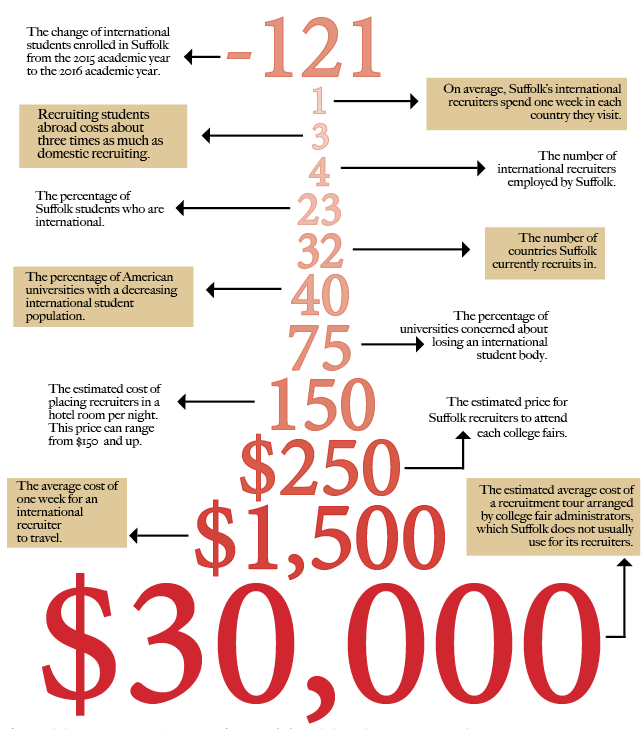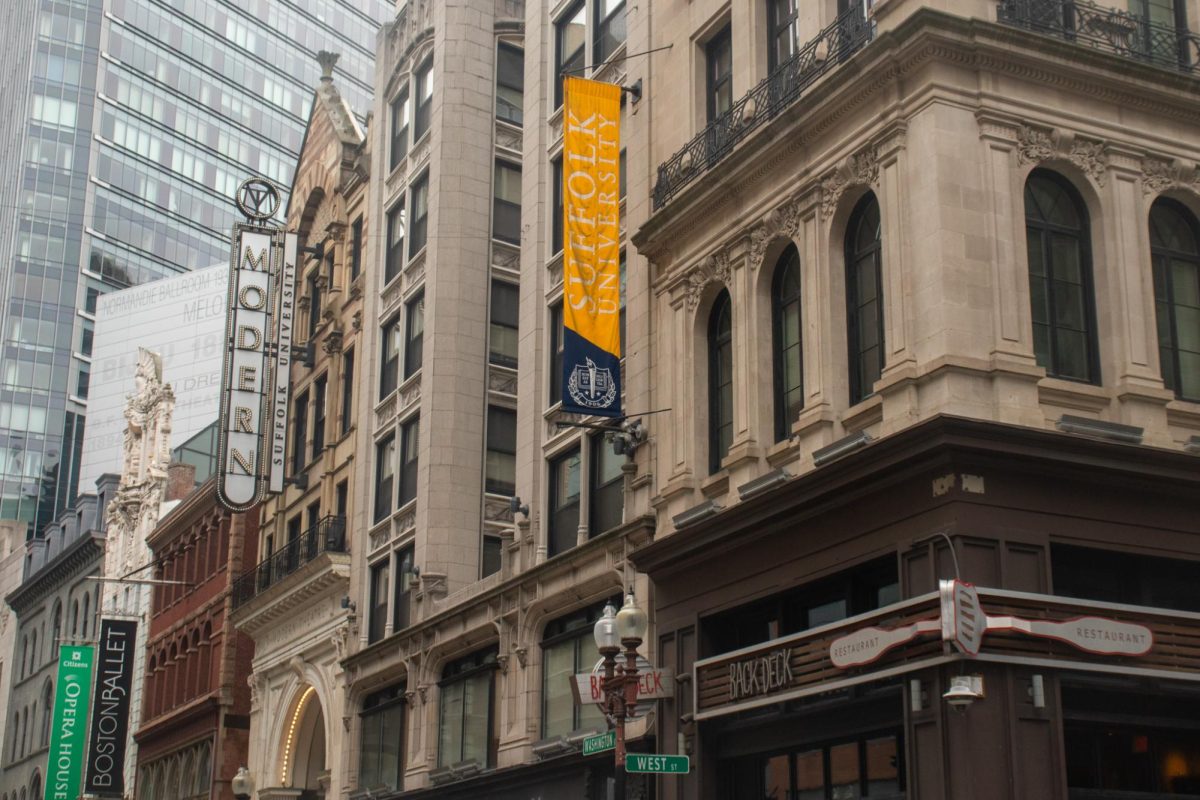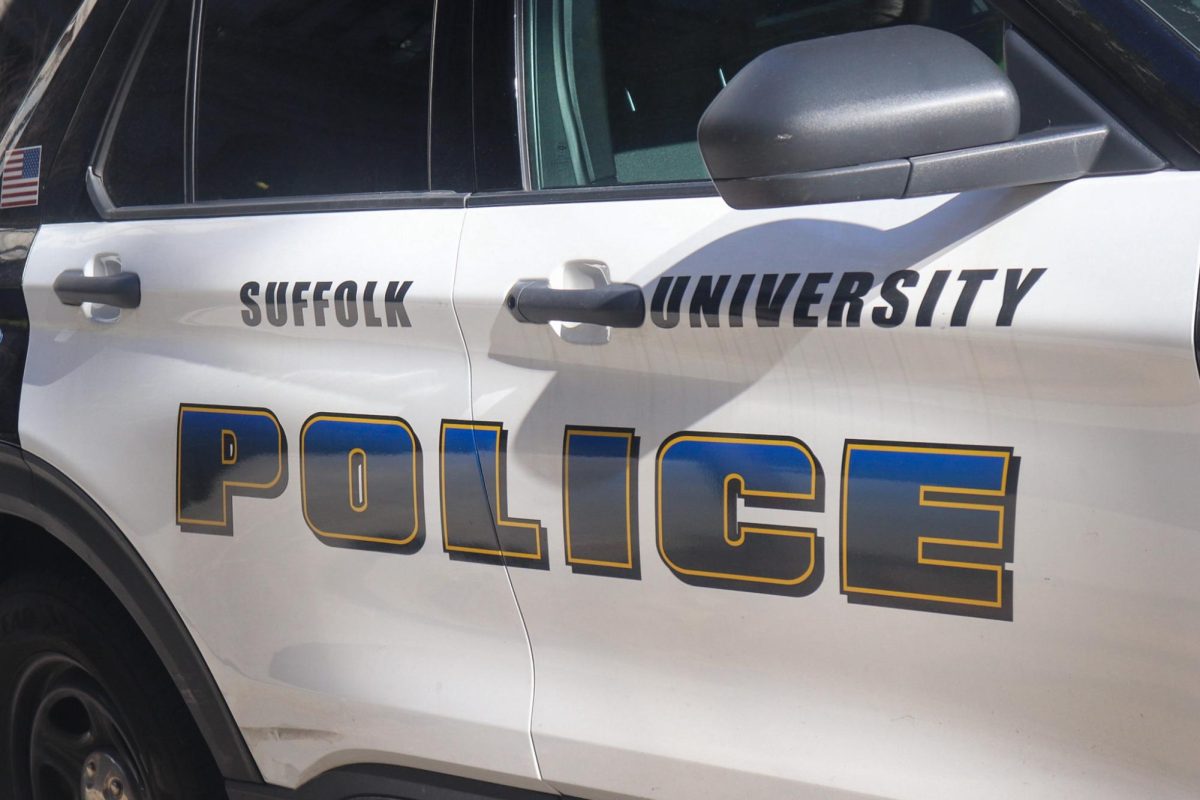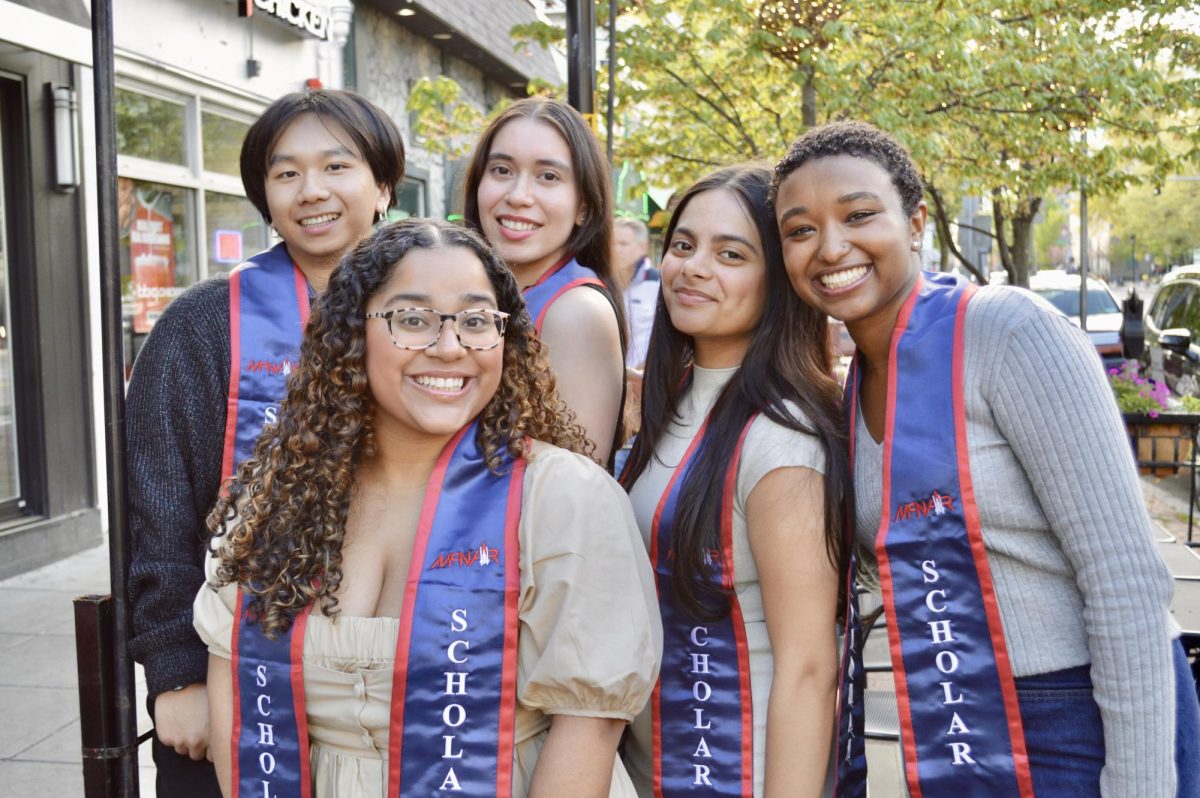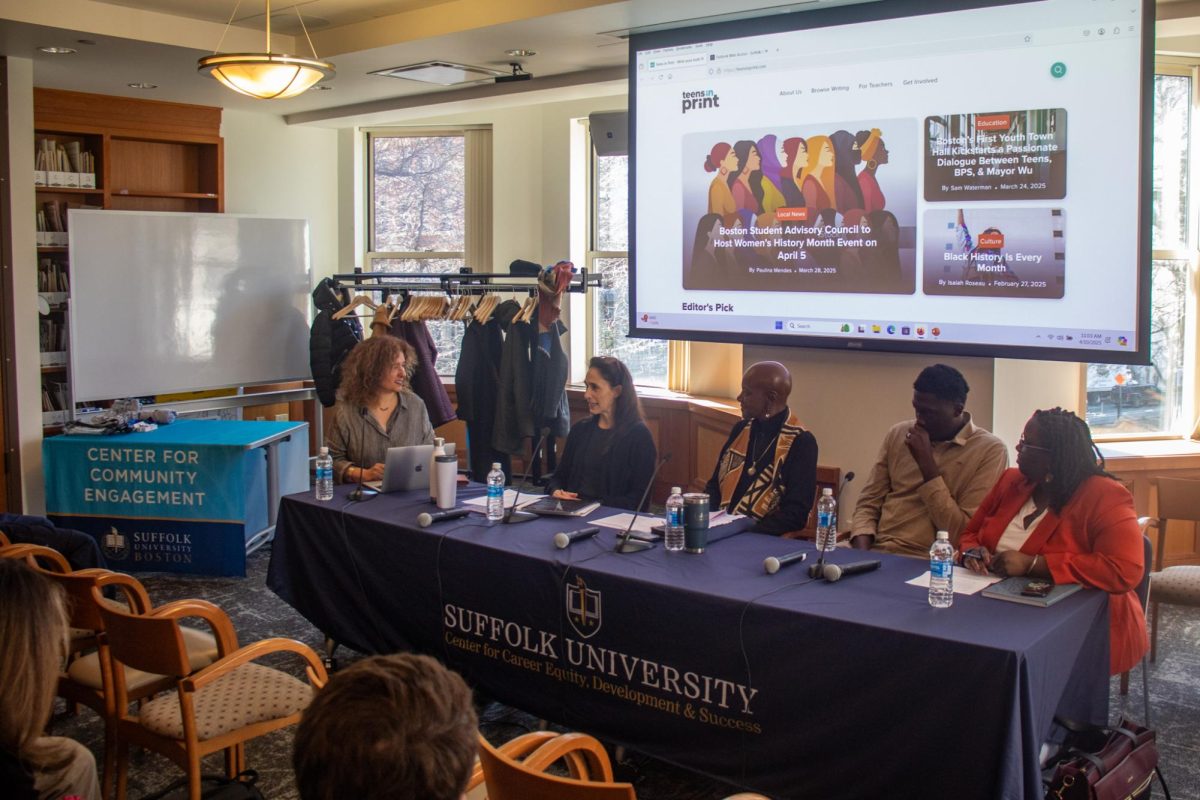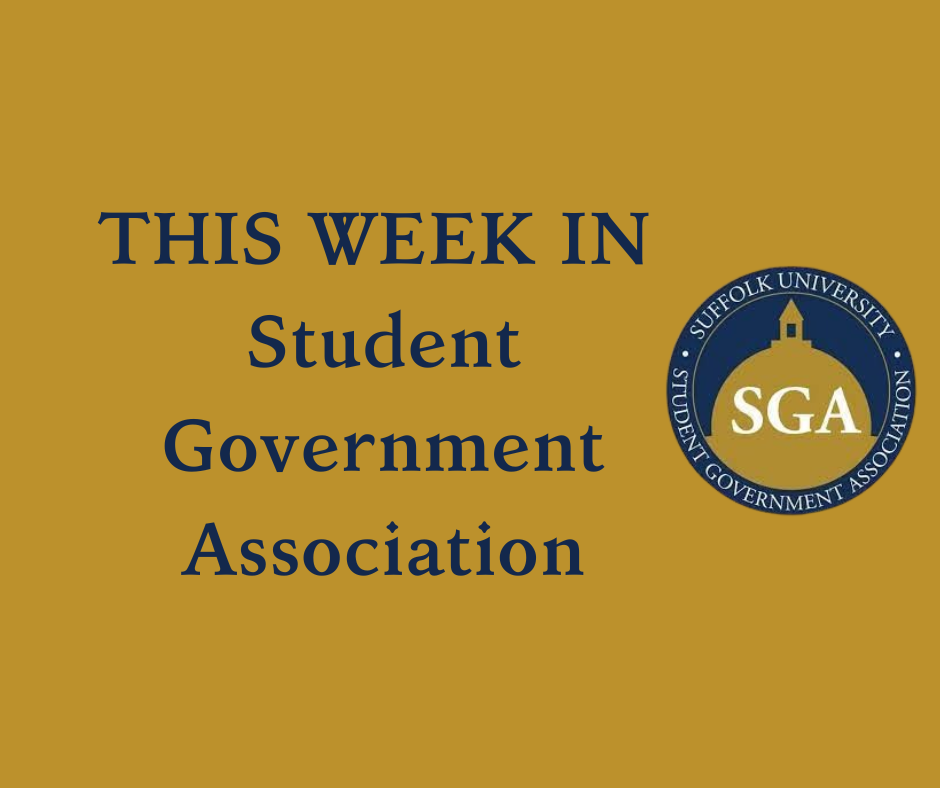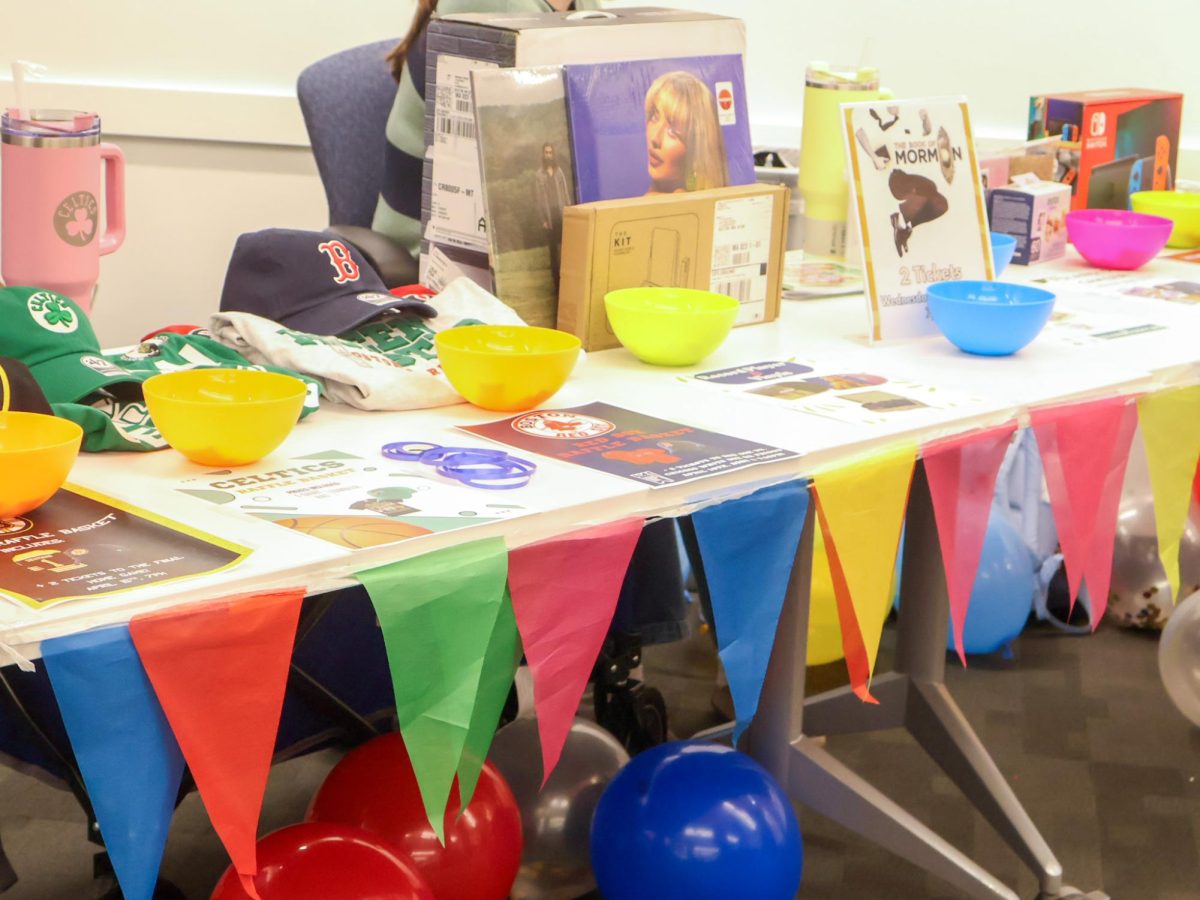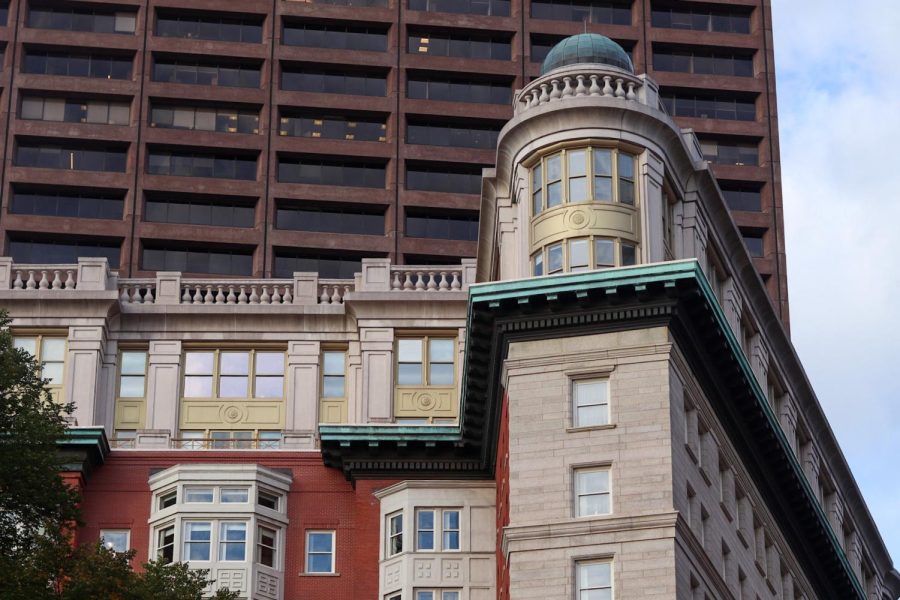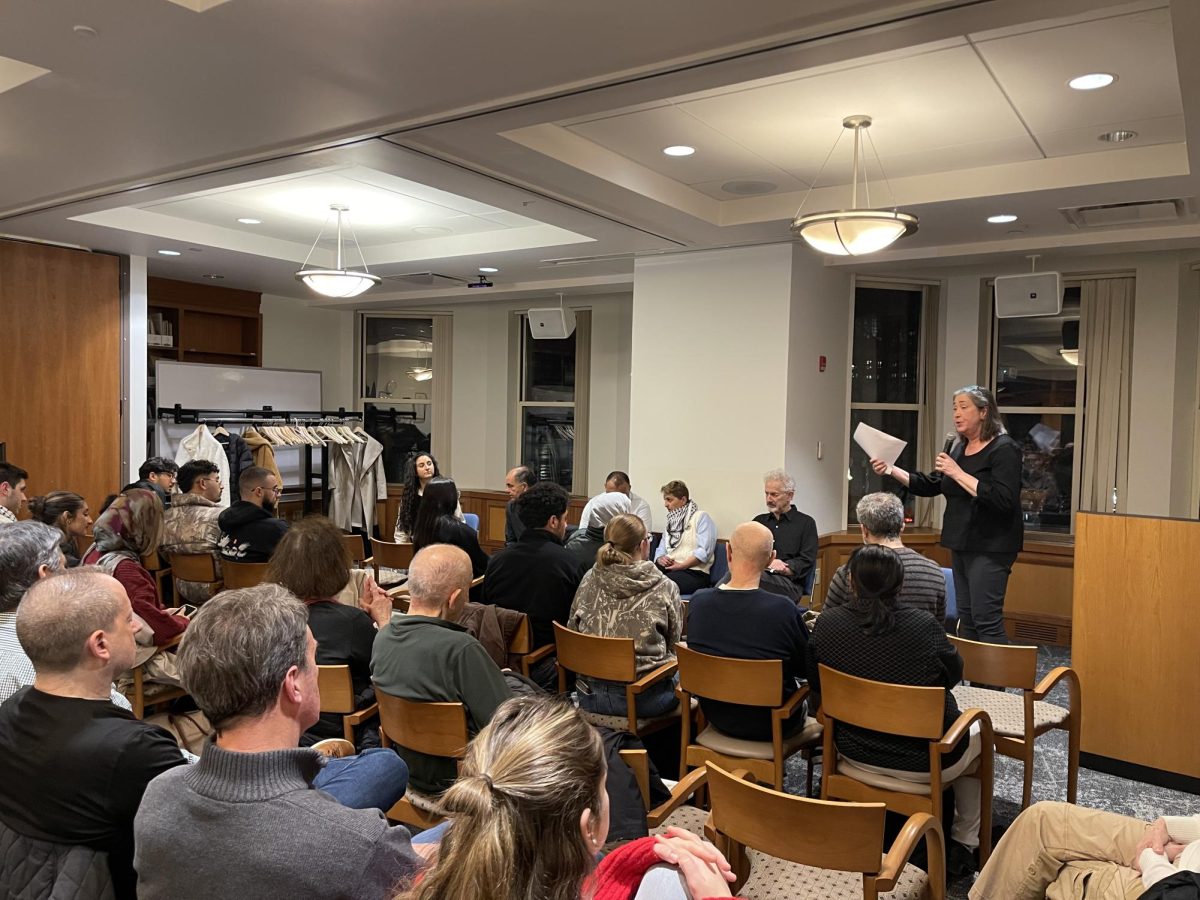Suffolk University has the fifth largest proportion of international students, according to US News & World Report. 23 percent of Suffolk’s population consists of international students, a standout statistic in a time when international student enrollment and tourism numbers are dwindling across the country.
Suffolk’s initial goal is to stabilize their international numbers. Long term, Suffolk hopes to dramatically increase their international population as a whole.
Currently, Suffolk actively recruits in 32 different countries in four continents. So far the university has relied on the same methods that have proved successful to interest international students, but current political uncertainty and increased competition has renewed the effort for recruiting a global student body.
International student enrollment at Suffolk has decreased from 1,509 students in 2015 to 1,388 students in 2016. International recruitment has been a strong focus at the university and tactics used to interest foreign students in Suffolk’s brand have been successful for more than a decade. Suffolk has been able to continue to bring students from all over the world to Beacon Hill, although it hasn’t been able to escape the trend observed throughout the United States since the election.
In order to attract so many international students, a significant budget is set aside specifically for international recruitment.
Although University spokespeople denied requests by The Suffolk Journal to disclose the international recruiting budget, Director of International Admission Raffi Muroy explained that the cost of recruiting internationally is at least three times the cost of domestic recruitment.
According to Muroy, Suffolk has four international recruiters who travel the globe to appeal to undergraduate and graduate students. These recruiters travel individually to different regions for three to four weeks at a time, spending roughly one week in each country. Recently, Muroy traveled to South America to take part in the recruitment effort.
He estimated the fee for the school’s recruiters to attend the college fairs overseas is roughly $250 and hotels are roughly $150 to $160 per night. Factoring in airfare and food, one week of travel usually ends up costing around $1,000 to $1,500, Muroy estimated.
“We’re starting from a position of strength from being located in Boston,” said Muroy. “Many international students are drawn to urban areas, so being in Boston puts Suffolk at a great advantage.”
During these trips, recruiters participate in college fairs, visit numerous high schools and have one-on-one meetings with accepted students.
“We tend to always visit high schools where we see activity,” said Muroy. As long as Suffolk has seen applicants from a certain school within the past three to five years, that school is typically visited again, he said.
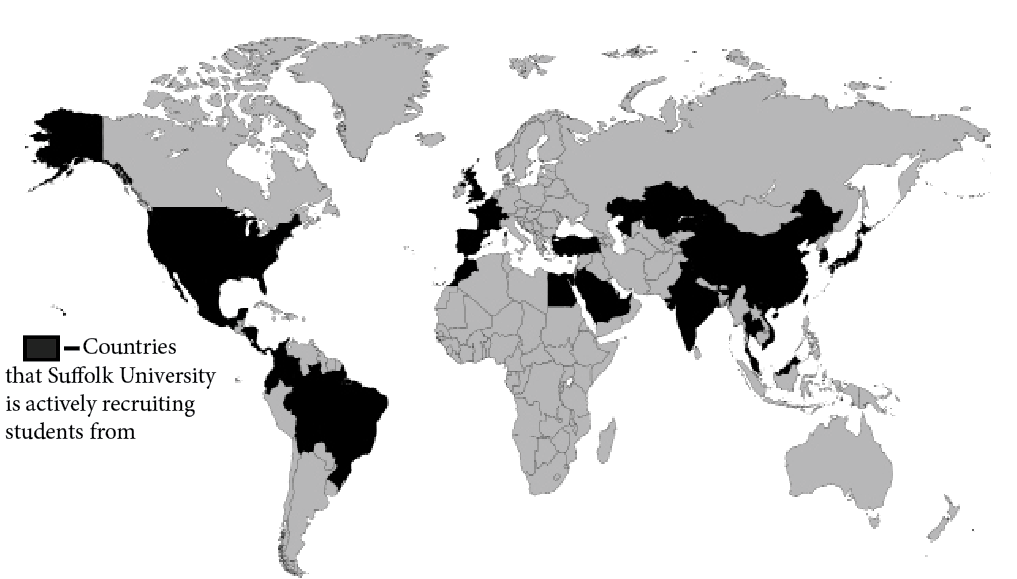
According to Muroy, each recruiter plans out their own individual trip and the methods used are relatively similar to domestic recruitment.
“We look at emerging areas, inquiries from our databases and in the evening we meet with students one-on-one,” said Associate Director of Undergraduate Admission Joyce Caruso. Ultimately, each trip varies based on how much interest there is in a certain region.
According to Muroy, recruiters visit high schools at college fairs across the targeted country. They may request to meet with students guidance counselors. Some fairs have scheduled, regimented recruitment tours that are organized by the fair’s administrators, but Suffolk tends to shy away from them because they can be expensive, roughly $30,000, according to Muroy.
“We try to be mindful of cost,” he said.
Suffolk is currently negotiating the possibility of enlisting INTO University Partnerships, an international recruitment firm, to help bring foreign recruitment numbers up.
“I think [INTO] opens another stream of applications that we wouldn’t otherwise get access to” said Muroy.
According to Muroy, Suffolk is negotiating with the recruitment firm because of a variety of factors including the recent election, decreased international enrollment, and increased cost of education.
“We could benefit from seeing more countries,” said Muroy, who said INTO has 33 offices across the globe. “There may be other students that are a good fit, but we don’t have access to that.”
Domestic competition has also spurred the university’s consideration of the recruiting firm.
“The competition for international students has grown,” said Suffolk’s Vice President of Enrollment Michael Crowley. “Domestically, the number of college students enrolling is dropping in certain parts of the country, so more colleges have been making investments in international student enrollment. They are starting from scratch and that puts us at an enviable advantage.”
The fight for the world’s international students has ramped up since the presidential election and the debate of U.S. immigration policy that followed.
“While there’s concern about policy changes that may, or are, impacting immigration that will add additional pressure,” said Crowley. “Ultimately we work in the immigration system and the regulations in place. But what we are able to do is focus on those things that make Suffolk a great place to study if you are an international student.“
One of the most effective recruiting tools Suffolk uses, according to Crowley, is the university’s Madrid campus. It allows foreign students to engage with the university oversees and promotes Suffolk’s reputation as a global university. Students in Spain may enroll in classes at the Madrid campus before making the decision the matriculate to Suffolk’s Boston campus, which has effectively widened the net that university recruiters cast.
“Because of the Madrid campus, there is the opportunity for students to start studying at Suffolk in Madrid which is not influenced by immigration policy in the U.S. It’s an inherent advantage that Suffolk has that I’m sure wasn’t foreseen when the Madrid campus was established,” said Crowley.
A recent study released in February found that 40 percent of American Universities are experiencing a decline in international student applications. The study, conducted by six higher education groups including the Institute of International Education, also found that three-fourths of American universities are concerned about losing an international student body. The most significant loss of applicants were those from the Middle East. Universities included in the study reported a 39 percent decrease in Middle Eastern undergraduate student applications and a 31 percent decrease in graduate applications. According to the study, a large portion of students and families in the Middle East, Asia and Latin America fear that shifts in American immigration policy may lead to increased visa denials from U.S. consulates and embassies.
Despite the current trend, Crowley held firm in his belief that Suffolk will continue to maintain its strong international student base in the face of immigration fears.
“I think our intent and our projections is that it should hold steady without any big shifts, certainly in the medium term of three to five years out.”
Some of the decline in international enrollment at Suffolk can be attributed to political and economic changes occurring in countries that have previously facilitated study in America on a larger scale. According to Crowley, one example of this can be seen in Saudi Arabia, which is a country that used to provide an enormous amount of scholarships to students studying overseas.
“The international pressures, economic and political, and concerns about immigration is added pressures to schools in terms of their efforts,” said Crowley.
Until 2016, Saudi Arabia’s $6,000,000,000 King Abdullah Scholarship used to fund overseas study for approximately 90 percent of its student citizens. In 2015, the King Abdullah Scholarship funded the education of approximately 60,000 Saudi students in America, which was the fourth largest group of foreign students in the country. After crude oil prices crashed, which accounts for nearly 75 percent of Saudi Arabian revenue, the country was forced to scale back the scholarship. Now, students who are recipients of the King Abdullah scholarship must choose one of America’s top 100 universities or study in a program that is top 50 in its field. The crude oil crash also forced Saudi Arabia to cut its education budget by 12 percent, which has been a blow to universities across America.
“[The scholarship] has certainly been reduced and that adds pressure,” said Crowley. “It doesn’t stop students from coming, but it does stem a financial resource that many students have benefitted from. That said, we still actively recruit there on both the graduate and undergraduate levels. It’s a very important country in sending students to Suffolk.”
Until the United States politically stabilizes, American universities will continue to suffer low international enrollment. Suffolk, which boasts some of the highest foreign student numbers, is unlikely to prosper in the international market while the majority of other universities suffer losses. The university’s deliberation over whether to employ INTO only shows that, just like the majority of other universities, the fear of losing foreign students has begun to creep in. The recruiting firm may be a local solution, but its ability to stifle the flow of students leaving the country is yet to be proven. Although, as the country’s political climate shifts gears, the universities are bound to follow suit.


